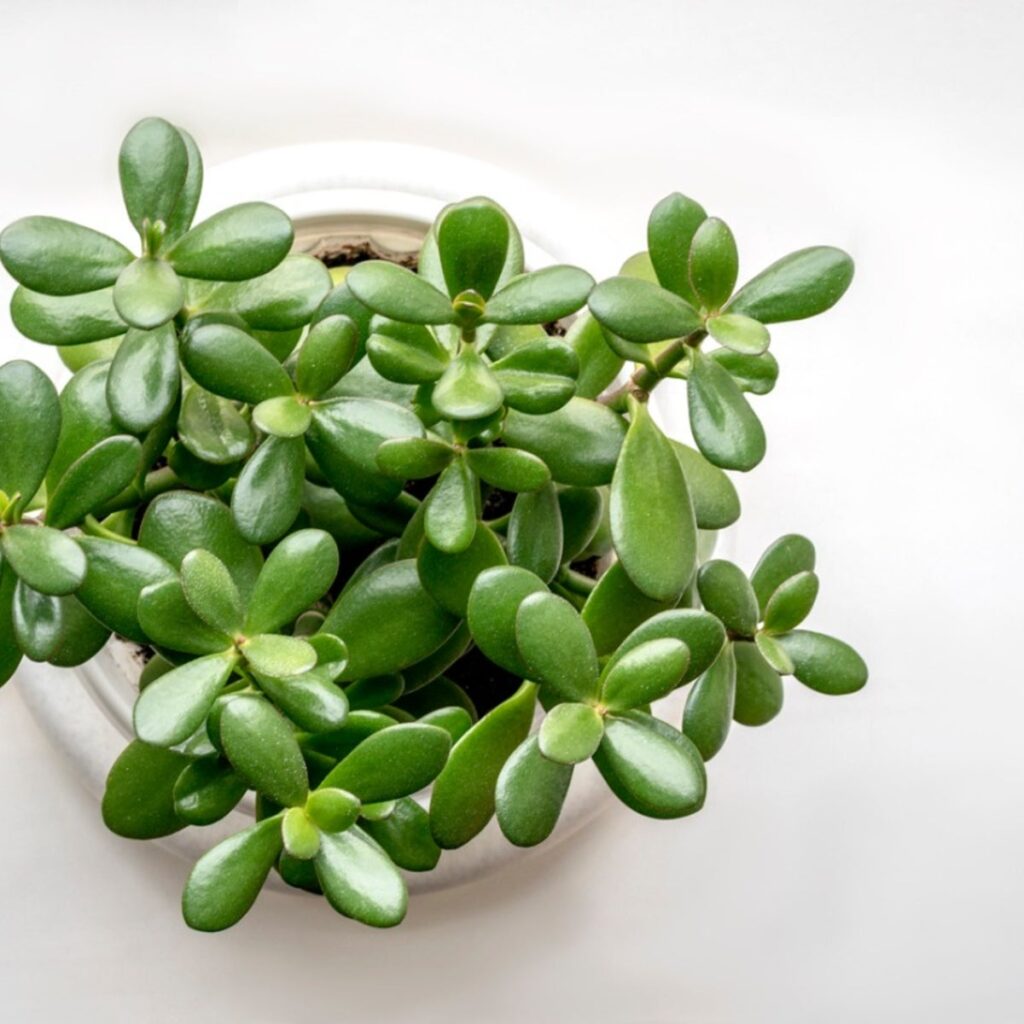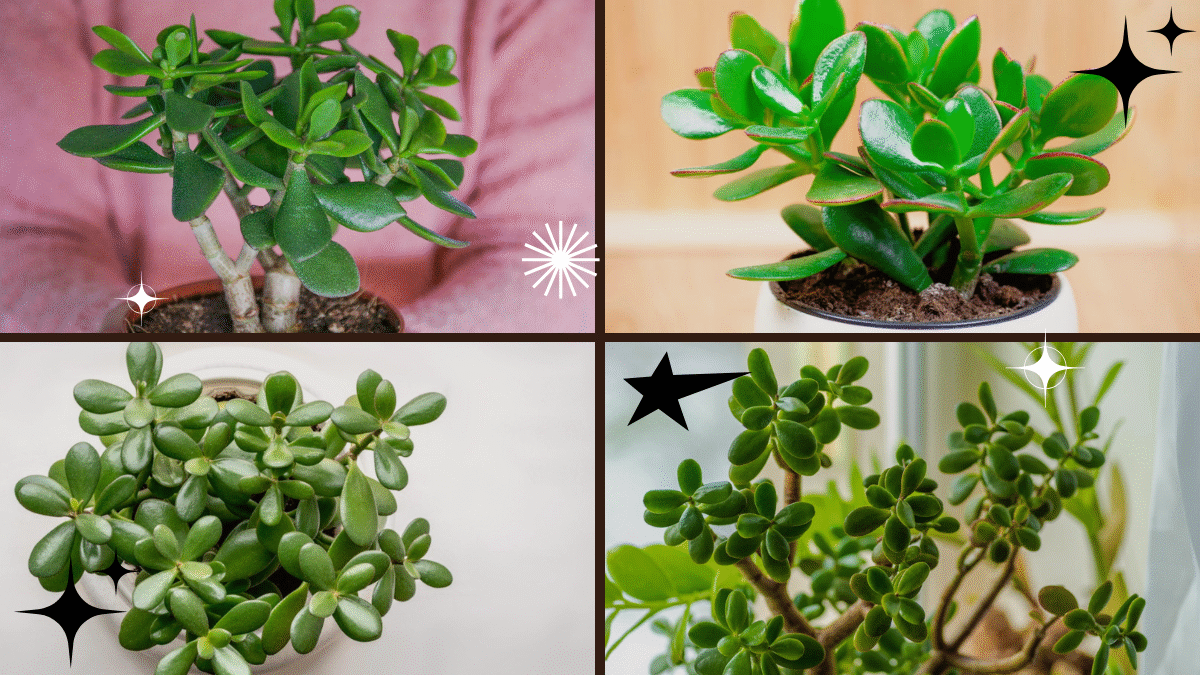The jade plant (Crassula ovata) is one of the most beloved houseplants around. Known for its thick, glossy, succulent leaves and tree-like branches, this hardy plant is not only beautiful but incredibly easy to care for. However, like any plant, your jade needs occasional maintenance to stay healthy and attractive — and that’s where pruning comes in.
If you’ve never pruned a plant before, don’t worry. Pruning a jade plant is simple, satisfying, and vital for encouraging strong, compact growth. In this guide, we’ll walk you through why pruning matters, when to do it, how to prune a jade plant properly, and tips for shaping it like a pro. Let’s get started!

Why Prune a Jade Plant?
Pruning isn’t just about aesthetics — it’s about keeping your plant healthy and thriving. Here’s why jade plants benefit from regular trimming:
- Encourages fuller, bushier growth: Cutting back leggy branches stimulates the plant to produce new shoots and leaves.
- Maintains an attractive shape: Prevents your jade plant from becoming too tall, top-heavy, or lopsided.
- Removes unhealthy or damaged growth: Stops disease from spreading and keeps your plant looking its best.
- Prevents legginess: Ensures the plant grows compact and sturdy, especially in lower-light conditions.
- Promotes stronger branches: Pruning helps jade plants develop thicker, more tree-like stems that can support their foliage.
Whether you want a compact tabletop plant or a miniature tree-like display, proper pruning is the secret to a stunning jade plant.

When to Prune a Jade Plant
The best time to prune a jade plant is during its active growing season — late spring through early summer. This is when the plant can heal quickly and redirect energy toward new growth.
Avoid heavy pruning during winter when jade plants enter a rest period. However, you can remove dead or damaged leaves anytime.
Signs your jade plant needs pruning:
- Long, leggy stems with sparse leaves
- Unbalanced or top-heavy appearance
- Dead, yellowing, or diseased leaves
- Branches rubbing against each other
- You want to shape it into a more compact or bonsai-like form

Tools You’ll Need
Before you start, gather these basic tools:
- Clean, sharp scissors or pruning shears
- Rubbing alcohol or disinfectant (to sterilize your tools)
- Paper towels or cloth (for wiping blades)
- Gloves (optional — jade plants are non-toxic but can be sticky)
Tip: Always sterilize your tools before and after pruning to prevent disease.

How to Prune a Jade Plant – Step-by-Step
Examine Your Plant
Start by taking a good look at your jade plant. Identify:
- Long, leggy branches
- Dead or damaged leaves
- Branches growing in awkward directions
- Crowded areas where stems cross or compete for space
This will help you plan where to prune.
Remove Dead or Damaged Leaves First
Use your scissors to snip off any yellow, shriveled, or rotting leaves. Cut them at the base of the leaf stem. This clears the way for healthy growth and prevents potential disease.
Trim Leggy or Overgrown Branches
To encourage bushier growth:
- Cut branches back to a node (the small bump where leaves grow from the stem).
- Use sharp scissors and make a clean, angled cut about ¼ inch above the node.
- New branches will sprout from just below the cut point.
Tip: Always leave at least a few sets of leaves on each branch so the plant can continue to photosynthesize.
Shape Your Jade Plant
If your plant looks unbalanced or top-heavy:
- Trim the tallest branches to your desired height.
- Remove branches growing inward toward the center.
- Focus on creating a rounded, symmetrical shape.
- Keep in mind jade plants grow slowly — make small, strategic cuts and reshape gradually over time.
Encourage Branching
For a fuller, tree-like appearance:
- Pinch off the tips of new, green stems with your fingers or scissors.
- This redirects the plant’s energy into side shoots, producing a bushier form.
- You can repeat this process as new growth appears.
How Much Can You Prune at Once?
A good rule of thumb: Never remove more than 20–30% of your jade plant at one time. Over-pruning can shock the plant and slow its recovery. If your plant needs a major makeover, spread the pruning over a few months.
What to Do with Cuttings
Don’t toss those healthy jade trimmings — they’re perfect for propagation!
How to propagate jade plant cuttings:
- Allow the cut ends to dry and callous over for 1–2 days.
- Plant the cuttings in well-draining succulent soil.
- Water sparingly until roots form (in about 3–4 weeks).
- Once established, care for them like your parent plant.
This is a great way to multiply your plant collection or share with friends.
Aftercare for a Pruned Jade Plant
Once you’ve pruned your plant:
- Avoid direct sunlight for a few days to reduce stress.
- Water lightly when the soil is dry, but don’t overwater — jade plants are drought-tolerant and prone to rot.
- Check cut areas regularly for signs of rot or infection. Healthy cut edges will dry and callous over.
In a few weeks, you should see new shoots emerging from where you made your cuts!
Common Jade Plant Pruning Mistakes to Avoid
| Mistake | Why It’s a Problem | How to Avoid It |
|---|---|---|
| Cutting too much at once | Can shock the plant and stunt growth | Prune in stages, no more than 20–30% |
| Using dirty tools | Increases the risk of spreading disease | Sterilize tools with alcohol before use |
| Pruning in winter | Slows recovery as plant is dormant | Wait for late spring or summer |
| Leaving stubs above nodes | Leads to unsightly dead tips | Cut cleanly just above the node |
| Not trimming leggy growth early | Results in weak, floppy branches | Prune regularly to maintain strength |
Benefits of Regular Jade Plant Pruning
Pruning isn’t just about looks — it directly impacts your plant’s health and longevity. Here’s what regular trimming can do for your jade:
Encourages compact, balanced growth
Strengthens branches to prevent drooping
Improves air circulation, reducing disease risk
Keeps the plant’s shape tidy and decorative
Extends the plant’s lifespan and vitality
Final Thoughts
Learning how to prune a jade plant is one of the simplest ways to keep your succulent looking lush, healthy, and beautiful for years to come. With a little confidence and a pair of clean scissors, you can transform a leggy, overgrown plant into a compact, thriving showpiece.
Whether you prefer a small, bushy jade or a striking bonsai-like tree, pruning gives you control over your plant’s shape and size. Plus, those cuttings you snip off can become new plants in no time.
So, grab your scissors, give your jade some love, and enjoy watching it flourish — one trim at a time.
Happy pruning!





Leave A Comment